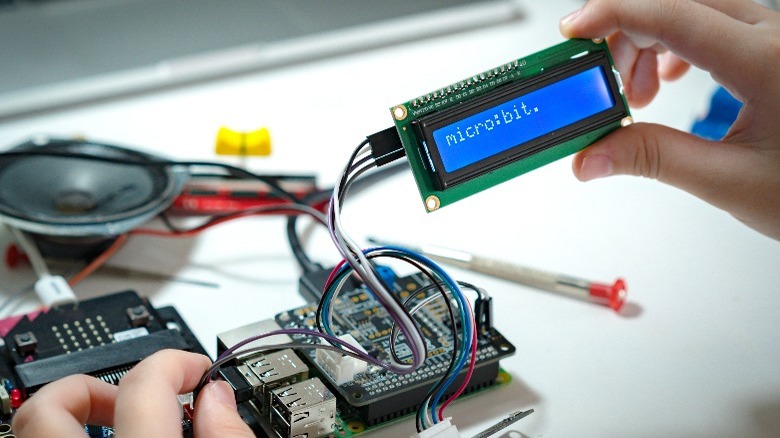Aimed at making programming more accessible to everyone, Raspberry Pi is a series of affordable computers that consist of the bare essential components required to get projects up and running. Currently, there are over 10 different Raspberry Pi Models available that feature slightly different specifications to accommodate a variety of use cases.
It’s only when you glance over some of the best Raspberry Pi projects that you realize how powerful and resourceful these single-board computers are. Everything from a voice-activated smart assistant based on AI technologies like GPT to a completely private and local password manager — the usefulness of the Raspberry Pi ecosystem is vast. While the technical prowess of the current flagship Pi 5 computer is alluring, the Raspberry Pi Zero is one of the more interesting products in the company’s catalog.
For the same price as a cup of cappuccino, you could purchase a minicomputer with the ability to power some of the most interesting ideas that cross your mind. But is a $5 Raspberry Pi Zero sufficient for building more than just single-purpose project demos? Obviously, there have been a few corners cut to reach this near-unbelievable price point — but the few yet evident advantages might be enough for you to consider picking up this tiny computer to kick-start your DIY adventures.
The Raspberry Pi Zero is incredibly good value

Daniel Chetroni/Shutterstock
At just $5 for a fully functional board, its price is the Raspberry Pi Zero’s biggest selling point. This makes it not just accessible to people with extremely limited budgets such as students or hobbyists, but also opens the possibility of buying a bunch of these boards for redundancy or testing purposes.
The Pi Zero is a featherweight in this industry, with dimensions of just 65 mm by 30 mm (2.56 x 1.18 inches) — making it ideal for builds that require flexibility in both size and locomotion. For a computer of such proportions and a weight of 9 grams, the Raspberry Pi Zero is no slouch with a respectable 1 GHz single-core CPU and half a gigabyte of RAM. Sure, these specifications might not be enough to run a fully-fledged version of Windows, but the recommended Raspberry Pi OS with its modularity can help power projects surprisingly well for its size and expense.
Where the Raspberry Pi Zero falls short

myboys.me/Shutterstock
Unfortunately, the slash in price and compactness in size don’t come without a few sacrifices. Most notably, the Raspberry Pi Zero lacks self-sufficient I/O options. You get a single Micro USB port for connecting hardware, with another port of the same kind reserved for power input — forcing you to carry around a USB hub if you wish to attach any meaningful devices to the computer.
Although the Pi Zero is 40% faster compared to the Raspberry Pi 1, running Windows 11 on a Raspberry Pi 5 is actually not far-fetched thanks to its beefier internals. Another potentially huge dealbreaker with the compact Pi Zero is the lack of built-in Wi-Fi or Bluetooth. While you can add network connectivity through add-ons, the improved offering that is the Raspberry Pi Zero 2 W not only brings wireless connectivity out of the box but is up to five times faster in performance— all while maintaining the same form factor.
Despite featuring a connector to add optics, the regular cable shipped with the Raspberry Pi camera is incompatible with this board. This functionality can be attained with the special camera connector for the Raspberry Pi Zero. By the time you end up with a fully working and «independent» Raspberry Pi Zero, you realize all the connectors and cables start to diminish its original promise of compactness. Still, the Pi Zero and its updated counterparts are incredible for what they offer.